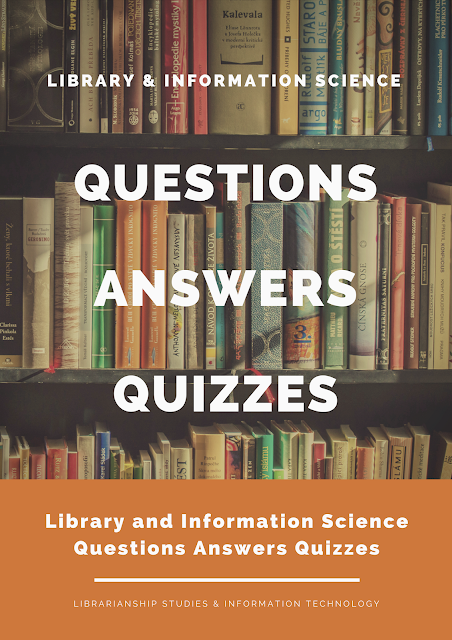QUESTION
RDA provides instructions for which of the following relationship types?
(a) Relationships between resources and persons, families and corporate bodies
(b) Relationships between works, expressions, manifestations, and items
(c) Relationships between persons, families, and corporate bodies
(d) Relationships between concepts, objects, events and places
(c) Relationships between persons, families, and corporate bodies
(d) Relationships between concepts, objects, events and places
ANSWER
Correct answers are (a) Relationships between resources and persons, families and corporate bodies; (b) Relationships between works, expressions, manifestations, and items; and (c) Relationships between persons, families, and corporate bodies.
Instructions for relationships between concepts, objects, events and places have not been developed yet.
RDA provides instructions for the following relationship types: (a) Relationships between resources and persons, families and corporate bodies; (b) Relationships between works, expressions, manifestations, and items; and (c) Relationships between persons, families, and corporate bodies.
The LC RDA training materials give below information about relationships in RDA:
Relationships in RDA
This
module is an overview of relationships expressed in bibliographic records, with
some information about relationships in authority records which are discussed
in greater detail in modules 5 and 6. This
module is comparatively short, because only a few of the possible relationships
are core elements for LC. However, relating entities is an important goal of
RDA and there are many types of bibliographic relationships you could provide in
bibliographic and authority records to support the needs of users. It is
important that you use cataloger’s judgment and give careful consideration to providing
those additional data elements when they are needed to enable a user to find,
identify, and obtain a specific resource.
Two Basic Goals of RDA Structure
One goal of RDA is
to identify attributes or characteristics of works, expressions,
manifestations, items persons, corporate bodies, and families. The other goal is relating these entities.
Expressing relationships in bibliographic and authority
records helps users find what they want and lets users know about other available
resources.
This module is organized by FRBR relationships in RDA and
how they are expressed in the catalog records you create.
- Persons,
Families, and Corporate Bodies: how these entities relate to a resource (Work,
Expression, Manifestation, Item)
- Works,
Expressions, Manifestations, Items: how these entities relate to each
other
- Persons,
Families, and Corporate Bodies: how these entities relate to each other
Relationships Consist of Two Parts
1. The entities being related: Work, Expression, Manifestation, Item, Person, Family, and Corporate Body2. The type of relationship
Entities are
identified by an authorized access point (what we used to call a heading) and are
coded in 1XX, 2XX, and 7XX fields. Other
identifiers for the entity may also be included in the record such as an LCCN,
an ISBN or a URI (universal resource identifier).
The type of
relationship is stated in a term or code that says what the relationship is, or
what role a person, corporate body, or family plays with respect to a particular
work or expression or manifestation or item. The terms can be relationship
designators that are listed in the appendices to RDA or may be expressed by
equivalent coding in MARC 21. A description (note) may also provide
identification of entities and information about the type of relationship among
them.
Relationship Designators
Relationship
designators are terms used to describe relationships among resources, persons,
families, and corporate bodies. The terms describe relationships between entities
represented by authorized access points, descriptions, and/or identifiers.
The RDA
relationship designators are located in three appendices for different
categories of relationships and are compiled in open lists in RDA.
Instruction for open RDA vocabulary lists: apply
cataloger’s judgment about using a new term if an appropriate term is not in
the list; notify PSD of new terms used. (LCPS for 0.12).
Appendix I: terms
which relate resources to Persons, Families, and Corporate Bodies. For example,
the designator “author” expresses the relationship between the creator of a
primarily textual work and the work itself.
Note: Relationship designators in
Appendix I are used only in bibliographic records.
Appendix J: terms
which relate Works, Expressions, Manifestations, and Items to each other. For
example, the designator “adaptation” may be used to express a relationship from
a work “based on” a work and the original work.
Note: Relationship designators in Appendix J are used
in both bibliographic and authority records.
Appendix K: terms
which relate Persons, Families, and Corporate Bodies to each other. For example,
the designator “alternate identity” relates a pseudonymous or other identity
assumed by a person to the real person. The designator “real identity” relates
the real person to an assumed alternate identity.
Note: Relationship designators in Appendix K are used
only in name authority records (formerly known as “see also” references).
The list of terms for relationship
designators in RDA can be used at a general level or a specific level. For example, in Appendix I.2.1 Relationship
designators for creators include broad terms such as “artist” and narrower
terms such as “sculptor.”
In addition to the RDA relationship designators, special
format catalogers at LC might also use relator terms in bibliographic records
from other vocabulary lists (LCPS for 0.12).
SEE ALSO
REFERENCES
1. Library of Congress. Relationships in RDA Quiz. https://www.loc.gov/catworkshop/RDA%20training%20materials/LC%20RDA%20Training/Captivate-Module%204--Relationships/RDA%20Module%204-Relationships.htm (accessed February 8, 2020).
1. Library of Congress. Relationships in RDA Quiz. https://www.loc.gov/catworkshop/RDA%20training%20materials/LC%20RDA%20Training/Captivate-Module%204--Relationships/RDA%20Module%204-Relationships.htm (accessed February 8, 2020).
2. Library of Congress. RDA: Module 4 -- Relationships in RDA. https://www.loc.gov/catworkshop/RDA%20training%20materials/LC%20RDA%20Training/Module%204_Relationships.doc (accessed February 8, 2020).
CITATION INFORMATION
Article Title
- RDA provides instructions for which of the following relationship types?
- Librarianship Studies & Information Technology
- https://www.librarianshipstudies.com/2020/02/rda-provides-instructions-for-which-of.html
- 2020-02-08
- 2020-02-08
FEEDBACK
- Help us improve this Library and Information Science quiz article! Contact us with your feedback. You can use the comments section below, or reach us on social media.


